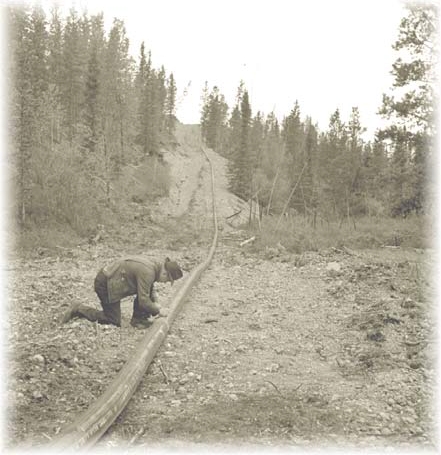The Canol Pipeline and Shutagot’ine Trial Remediation Project:
Dr Sinead made mention in her lecture of the fact that the history of the canal is relatively unknown as it is a story of massive war cell industrialization….Spoke about the environmental and social impact of the resource extraction project that harbored the landscape as well as the Shutagot’ine Trail Remediation Project. She pointed out that part of the road and abandoned pipeline materials are actually within a certain settlement area. This was signed by the chief of Sahtu Dene and Metis councils and the Federal government(which was effective 1994). The Europeans and merchant traders moved through these areas in the 19th century. Arrival of the Europeans transformed Sahtu hunting patterns. By the 20th century the interest of the Europeans turned to oil, gas and mineral deposits. The speaker stresses on how toxic legacies of industrial waste in resource peripheries continue to be ignored and as well the techno- scientific fix which is driven by capitalist interests and further commodification of nature. She mentioned numerous examples in Northern British Columbia such as hydro electric dams being built in territories where environmental consultation is not set up. A great question to always ask when thinking of the remediation is for whom and where does the benefits lie.
Historical details of the pipeline: The Canol pipeline construction was initiated by the US war department in 1942, construction began in 1943. The pipeline carried crude oil across 800 Km. It was used to transport oil to the refineries been built in Whitehorse(exploration). Built with the approval of the Canadian war committee of the cabinet. The canol was one of 3 major wartime projects at the time. There was negotiation between the US government and Soviet union. The first project was: an extensive North West staging route and the second the Alaska Military Highway and then lastly the Canol which was an intended source of fuel for aircraft’s and vehicles using the staging routes and the highway. These project was built by about 30,000 individuals from the US army. Two years after the construction, the pipeline was pumping about 3000 barrels of oil to the refinery in Whitehorse. Sadly, the pipeline was abandoned after only 15 months in operation despite the hard work and investment of both capital as well as labor that had been put into its construction. Some of the contributing factors included:
- Permafrost
- Some construction faults
- Unforeseen logistical and supply problems,
- Absence of financial controls from some of the military officers that were in control of everyday activities
- Fluctuating oil prices
- End of the war.
A few pieces of the engines were removed and taken elsewhere, part of the pipelines were salvaged and used in other projects. The refinery was sold in 1948, taken to Leduc in Alberta where it was set up. The projects estimated cost was estimated to be 30 million dollars .
Canol Infrastructure consisted of:
- 4- inch steel pipeline above ground and transporting unrefined crude oil for direct use for diesels in motors.
- 6 pump stations set out along the road with each station consisting of a pump house above ground storage tanks generated building dormitory
- Access Roads
- Telegraph line (The Sahtu were interested in cleaning this up)
- Maintenance camps consisting of dumped trucks
- Emergency shelters constructed at intervals of 5-16 Km used as dormitories for laborers working on the project.
The Canol Trail Remediation Project:
In 2007, the federal government listed this within the contaminated sites program and also the canol remediation group was formed . These remediation efforts were federally funded via indigenous and Northern Affairs Canada. To reduce environment and human health risk associated with the abandoned pipelines as well as the related infrastructure. Removal of batteries for off site disposal, excavation of contaminated soils, removal of fuel from storage tanks and machinery also rolling out and lifting out all the telegraph lines. Other issues encountered were abandoned oil barrels removing asbestos materials to address physical hazards such as fuel dumps and bridges that need repair.
The speaker answered the questions directed at her very intelligently which shows how passionate she is about this project and also vast and knowledgeable in her field! Although it is not related to my area of research and as the saying goes no knowledge is ever a waste, i am quite amazed and intrigued by the subject matter mainly because prior to the lecture i had never heard about this back home in my country (Nigeria).


Recent Comments